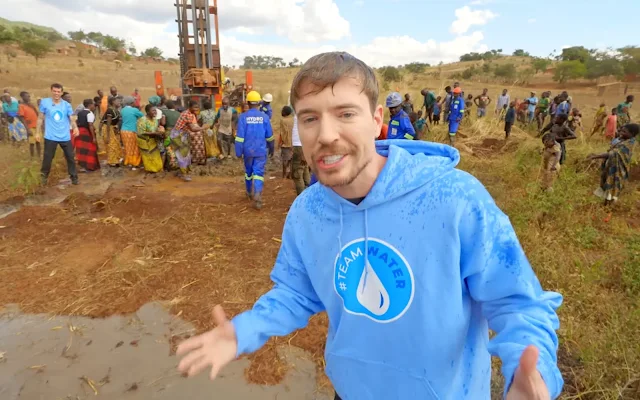Jimmy Donaldson, known online as MrBeast, oversees a content operation that produces high-cost, high-visibility videos for a global audience. His channel boasts more than 420 million subscribers.

Image: MrBeast / YT
Former employees and an internal production guide describe a process that mixes fast decision making with heavy planning, and where a single judgment by Donaldson can end a project. That judgment is often summed up by one word: cringe.
From idea to green light
As reported by Insider, ideas begin in a central ideation team that tracks trends, tests titles, and drafts thumbnails. The team records large numbers of concepts and narrows them through internal review. Only a small share reach Donaldson and his creative leads for final consideration. The company treats concept work as a pipeline that feeds production teams with ideas that can scale.
When an idea moves forward, producers assess cost and feasibility. The company added a dedicated feasibility group as it expanded. Ambitious proposals can be postponed or shelved if they are impractical, but staff report that Donaldson resists quick refusals. He expects teams to pursue alternatives before stopping a concept.
A production hub in Greenville
Beast Industries has built a base of set builders, technical crews, and a rotating pool of assistants. Early on, temporary helpers were called friends of friends. The company now relies on a larger task force to handle on-set work and logistics.
Large challenge videos require extensive camera coverage. For competitions with many participants, the crew deploys numerous cameras so no moment is missed. Long-running challenges may have cameras recording around the clock. Most logistical work is completed before on-camera talent arrive, leaving final decisions to Donaldson and creative leads.
Producers as generalists
Producers at MrBeast perform a broad set of tasks. They coordinate contractors, schedule crews, manage budgets, and troubleshoot on site. The work differs from traditional film crews, where roles are often specialized. Staff describe producers as problem solvers who must be ready to step into multiple tasks as needs arise.
Editing with attention to retention
Editing is organized around keeping viewers engaged. Projects that span days or weeks generate hundreds of hours of footage. Teams of editors handle daily trims, syncing, and assembly. Lead editors pull the final cut together. For longer shoots, editors often build rough cuts during production so there is a working edit by the time filming ends.
The company uses detailed viewer metrics to shape edits. Editors monitor the exact second audiences stop watching and adjust pacing and highlights to reduce drop-off. That approach makes post-production central to the final story.
Release strategy and follow-up
Final videos are formatted for multiple platforms and languages. Thumbnails undergo A/B testing and the team prepares short-form clips for vertical platforms. Some content is altered for younger viewers. After release, staff analyze retention and engagement data to evaluate performance and inform future planning.
A repeatable system
The operation combines methodical idea work, thorough feasibility checks, heavy on-set coverage, and analytics-driven editing. Former staff say the process lets the channel test more ideas and learn quickly from failures. That scale of resources and the emphasis on measurable engagement create an advantage that many creators try to emulate.
Notes: This post was edited/created using GenAI tools.
Read next: Meta Scientist Highlights Core Principles for Safer AI
